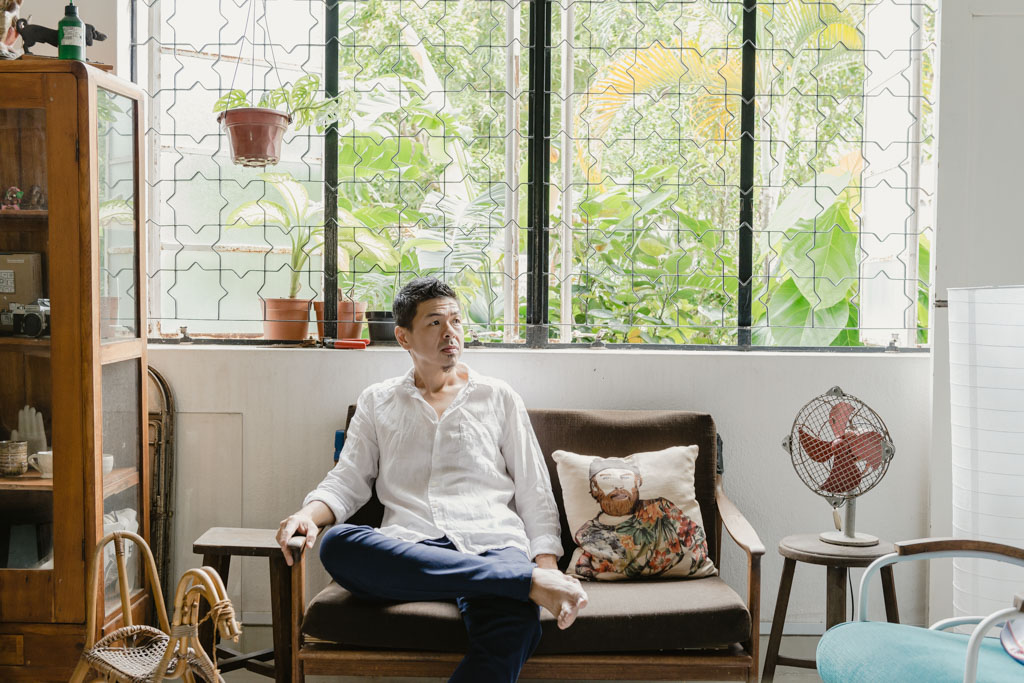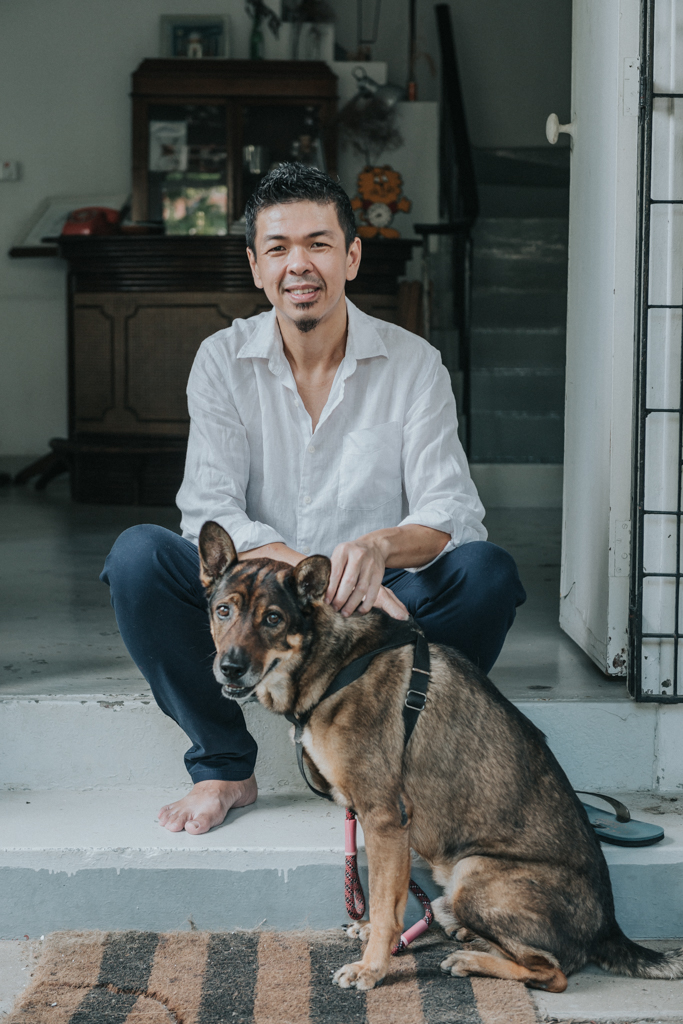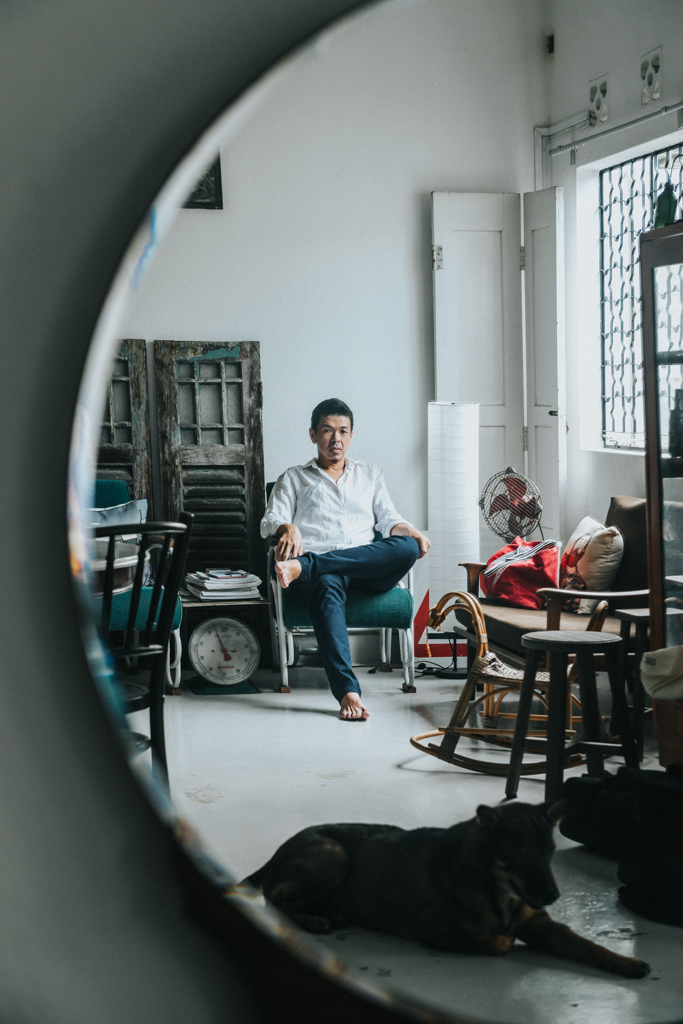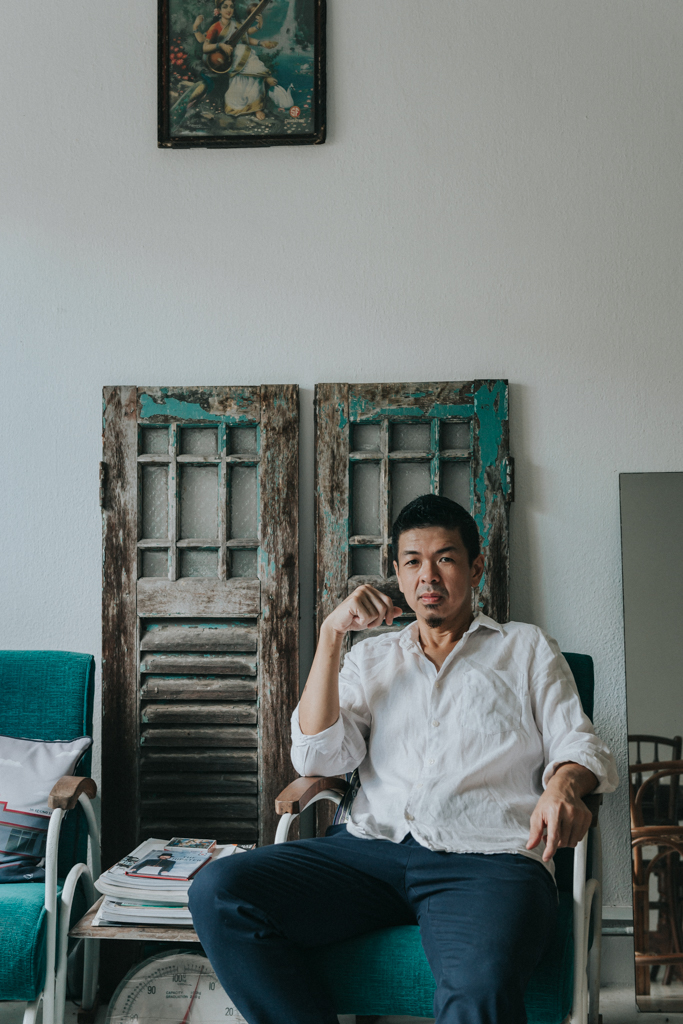After many years of absence, a family obligation brought Mr. Sherman Ong back to his hometown of Malacca. During that time, the award-winning photographer and filmmaker lost no time visiting old haunts, reconnecting with old friends, and exploring new ways to start a community and film project.

An ASEAN scholar, Mr. Ong left Malacca to study in Singapore when he was about 18. “I have not gone back for long periods since I left, and so now that I have an artist’s residency NUS Tun Tan Cheng Lock Centre in Malacca, I decided to spend more time and explore my hometown,” says Mr. Ong.
Malacca was traditionally a port town, Mr. Ong observes, there are many well-established families in Singapore that trace their roots to Malacca. But when the British founded Singapore, the merchant class mostly migrated to Singapore as a natural progression. “As a result, the ancestral homes remained in Malacca, as the businesses flourished in Singapore,” he observes.
“People moved from one colony to another. Remember that a lot of what are independent countries today have not yet been established in the 1700s and 1800s; a lot of them were colonies occupied by the Dutch, the British and the Spaniards. Authorities asked for immigrants’ documents but they argued that they were simply moving from one part of the colony to another.
That is the underpinning of the cultural diversity and plurality of port towns such as Malacca, Penang and Singapore, explained Mr. Ong. “I was interested in exploring that.”
On his return to Malacca, Mr. Ong discovered that it had become “a bustling weekend tourist town, although the weekdays were very quiet”. He wanted to promote local culture, crafts and artisans, and launch some community activities. “I contacted a friend whose house on Heeren St. could be a venue for community events; his father, a painter, violinist and maker of stringed instruments, was my Malay language teacher.”
Traditionally, Malacca imports many things from China, observes Mr. Ong. “I wanted an alternative stuff for the tourists; my interest was in artisanal and indigenous crafts. We have handicrafts made by the Penan people from Sarawak, we have Sabahan craftsmen who make baskets and jewelry in indigenous materials. Although this movement can be observed in KL, in Malacca it’s just starting.
Mr. Ong was not interested only in the economic gains for local craftsmen, but also the social cohesion that can result from the project. “I’m interested to galvanize the community and make them aware of the plurality of the society that they live in, to showcase the diversity that is very much the fabric of Malaccan society, as much as it is in Singapore.
“In Malaysia, I find that there is always a lacuna, a gap, and therefore an opportunity t bridge it. It’s a challenge but it is interesting. In KL, I do some workshops drawn from my practice in Singapore where I developed my craft and profession.
Mr. Ong recently shot a film for the Georgetown Festival that explores the idea that Singapore was founded on the template of Penang. “You can see, for instance in the street names – Victoria Street, Beach Street – the template of the Jackson town plan, an urban plan, a template for Singapore."
The tide is reversing, Mr. Ong surmises. “A lot of Singaporeans are buying properties in Penang as Penang natives are seeking employment and living in Singapore. My film deals with social issues surrounding migration. I’m finding out that it’s not so much a diaspora but a form of migration from one Straits Settlement to another. These port societies have been the melting pots that produce hybridity and diversity, which in turn define the cultures of these places.
“In Singapore, you often speak of peranakans as if it’s always a ‘Chinese hybrid’ phenomenon; in Malacca and Penang, you find Indian peranakans and even Malay peranakans – the so-called Jawi peranakans,” Mr. Ong elaborates. Peranakan means ‘native born’, he emphasizes, “so by definition Eurasians are also peranakans. It’s like the hybrid creole culture of Latin America, or the mestizo culture of the Philipines.”
The context, of course, is the dynamics of the extended family that presupposes the transfer of knowledge and culture from the older to the younger generation, Mr. Ong says. But with the nuclear family – a couple and their dependent children regarded as a basic social unit – such transfer of the knowledge has pretty much stopped.
“The culture will always expand, adapt, and ultimately, morph into something. The Chinese culture among peranakans was spread through the extended family system, through grandparents who looked after the grandchildren. If you were a Chinese peranakan, you grew up listening to your grandparents’ stories and watched what they did everyday. But now with the nuclear family, the link is gone.
That is also the reason behind the Chinese peranakans speaking Malay. In traditional families, Mr. Ong notes, the men went to work and the women stayed at home to run the household. “The women – being the local wives – spoke Malay and they passed it on to their children. However, the children followed the (Chinese) identity of their father. You will find this mostly in Malacca and Singapore where the first wave of settlers ended up and took local women for their wives.”
Mr. Ong grew up aware of being seen as ‘a Chinese but not Chinese’. “I grappled with the meaning of ‘Chinese but not Chinese’. We were considered by the later Chinese who arrived in these parts as non-Chinese. We were the Chinese who did not speak the Chinese language like the larger Chinese community. We were therefore an outsider.
“On the other hand, we were also outsiders in the Malay community because, although we speak a form of Malay language, we identified with the Chinese. Our customs and traditions are primarily Chinese, but our socialization, the way we speak, is essentially Malay.”
Mr. Ong points out the most Peranakans in the port cities speak a different variety of the Malay language, the ‘Bazaar Malay’, which “tends to be very simple and practical – a language that can be used to communicate with Indians, Chinese and Malays, or among the peranakans themselves”. Bazaar Malay, sometimes referred to ‘market Malay’ or ‘pasar Melayu’ lowers the linguistic barrier between peoples, he explains.
In one of Mr. Ong’s films, a male character from Aceh who came to Penang talked about his ‘cultural isolation’ in a monologue. “The Acehnese wouldn’t consider themselves Indonesians. The Dutch annexed Aceh to Indonesia around the time that they granted the country its independence. In reality, they formed closer ties with Malaysians when they fled into the country. There are many Acehnese in Malaysia. The term masuk melayu means assume the Malay identity, in order to live and survive in in a new country.” This also means suppressing one’s identity and assuming another one for survival. This type of identity suppression is a thread in Mr. Ong’s works.
The suppression of cultural identity is confounded by a systematic erasure of identity. “Differences are not easily tolerated in Malaysia,” Mr. Ong emphasizes. “There is a tendency to lump people under one unified identity – mostly for political gains.” The repression and obliteration of identities work for the powers that be. “I examine this in my work by bringing up the idea of diversity and plurality. I would like to see the audience get in touch with their indigenous histories and offer several alternative voices.”















 Back
Back
